PORTLAND — Ollie Wright steps up to the penalty spot and takes a deep breath of October air. He has been the brightest star on the buzziest team in American soccer, and now, with a place in the USL League One playoffs on the line, he has a chance to seize the lead early in the second half.
The Westchester keeper guesses left. As he falls to the ground empty handed, he turns back to watch, helpless, as the ball floats lazily toward the spot he has just vacated. Orange smoke fills the air as the crowd erupts.
Wright has scored a Panenka, a penalty chipped right down the middle. The technique, 90% nerve and 10% disdain for the keeper, is the game’s ultimate expression of showmanship.
And Maine is loving the show.
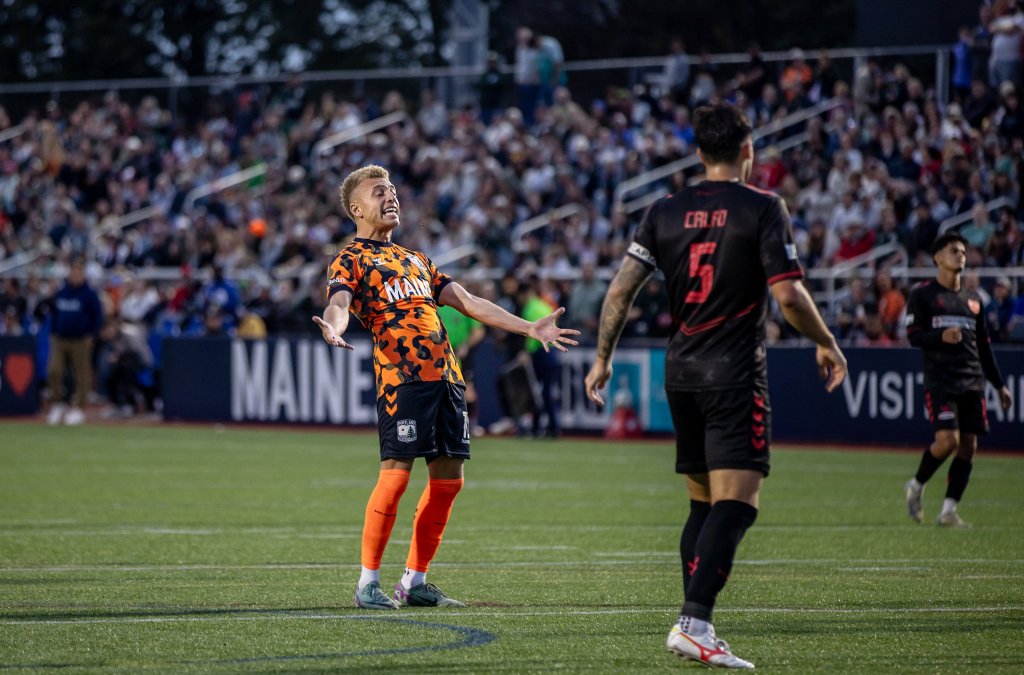
More than six months after the Hearts of Pine first took the field, the state’s newest professional sports team remains the talk of the town and the toast of the American soccer community.
Nearly 5,900 fans crammed into Fitzpatrick Stadium for last Saturday’s match against Westchester — a sellout, as always. Headlined by the Valentine Band and the always-standing, usually-shouting faithful in the supporters section, the raucous crowd included U.S. Women’s National Team legend Michelle Akers, the latest celebrity to don a Hearts jersey.
Just as notable were the people who weren’t there: the roughly 4,000 supporters on the season-ticket waiting list, all eager to get in on the party.
How did we get here?
A year ago, Sports Business Journal named Portland the nation’s top minor league sports market. The Sea Dogs attract hundreds of thousands of fans each season by promising an up-close view of future Red Sox stars. The Mariners and Celtics, too, draw steady crowds.
But fans don’t pack shoulder to shoulder in bars to watch the Sea Dogs on TV the way they gathered at the Portland Zoo one recent Friday evening to watch the Hearts take on Knoxville. They don’t devote weeknights to composing and rehearsing songs for their makeshift pep band to perform at Mariners games. They don’t spend every waking moment of every single Celtics game banging on drums, singing, chanting and generally making as much noise as possible.
The Hearts have created something new. Or, as those around the team will tell you, they’ve tapped into forces that have been bubbling under the surface for years: a love for the sport of soccer; a hunger for community; a deep-rooted pride in Maine and all that it represents.
Weeks away from the end of the team’s wildly successful inaugural season, staff and supporters believe this is just the beginning.
“If nothing else, all of the connections, and all of the relationships and all of the familial feel that’s started, all of that goes deeper with time,” said Josh Lane, the club’s head of marketing. “Hopefully there’s a championship in there.”
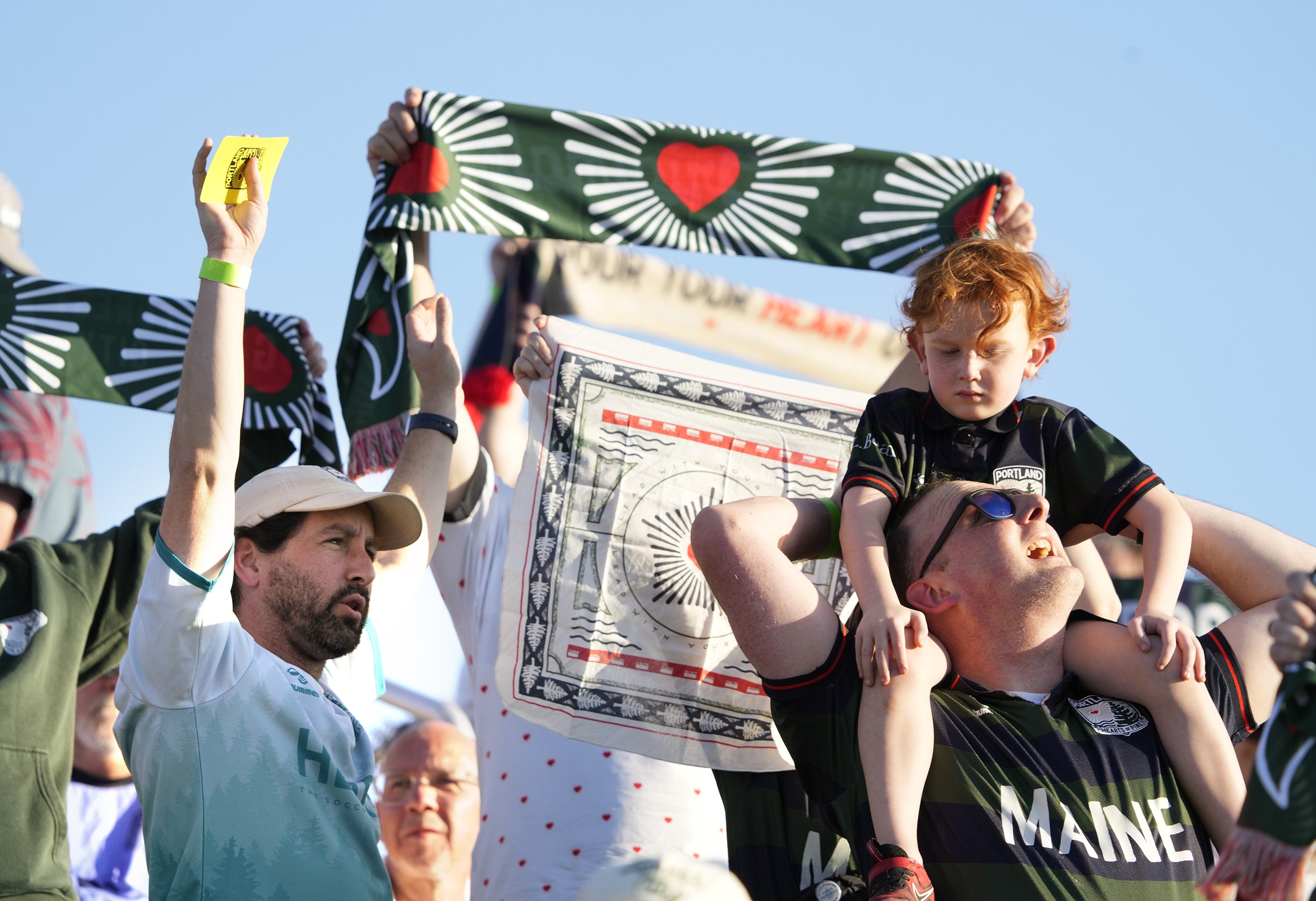
PART OF THE MOVEMENT
The party starts early on matchdays.
More than an hour before the Hearts’ 5 p.m. kickoff, Donald Thibodeau is already holding court. The supporters section, which makes up 20% of the bleachers on the stadium’s highway side, will soon throb with noise. Members of the Dirigo Union supporters group unfurl banners between sips of beer, pull trumpets out of cases and grab ear plugs in preparation for the coming cacophony.
“Up the Hearts,” Thibodeau, the group’s co-chair, cheers again and again. He greets friends, fellow members of the Union and passing strangers wearing friendly colors. “Hey! Up the Hearts!”
Elements of soccer fandom can seem alien to those who are only familiar with American professional sports. The slang. The singing. The scarves. To skeptics, it can come off as a bit performative, in the mold of a college student who returns from a semester in Europe with a new accent.
Perhaps self-consciously, early professional American soccer franchises in the 90s mostly steered clear of foreign trappings, opting for American-style names like the Tampa Bay Mutiny and arcadey rule changes like a now-infamous (and defunct) shootout system.
But pro soccer only really found its footing in the U.S. more than a decade later, when a new wave of franchises like the Seattle Sounders and the Portland Timbers began to lean into the cultural elements that define the gameday experience in so many other parts of the world.
It was a Timbers match in the other Portland that made Thibodeau fall in love with being a soccer fan. The unyielding drums. The thick clouds of celebratory green smoke. The way the team and its supporters made an effort to embody the city’s “Keep Portland Weird” ethos.

In this world, he realized, being a supporter wasn’t about just watching a game; it was about being part of a game — about fan, team and city coming together as one.
He wanted in. And he wasn’t alone.
Many of the Dirigo Union’s nearly 900 paying members signed on before Portland’s soccer team had any players or a coach or even a name. Some were New England Revolution fans tired of trekking to Foxborough to support a franchise that didn’t really represent their community.
Others had discovered soccer by watching their kids’ teams, playing video games or following the U.S. Women’s National Team through their four World Cup wins. All were hungry to be a part of something bigger than themselves but closer to home.
They would have to wait. Though the Union formed in 2020, the COVID-19 pandemic and other challenges, including finding a place to play, delayed the Hearts’ arrival for years. That might have been a blessing in disguise.
“You go to a game at Fitzpatrick, and there’s thousands of people there who have been here from day one and who have this legitimate sense of ownership over this club,” team founder Gabe Hoffman-Johnson said. “They’ve been the ones putting the work in alongside us.”
As the anticipation built, the Union’s leaders had plenty of time to dream about what kind of vibe to bring to Fitzpatrick. The stands should feel like a party, they decided. They studied the exuberant atmosphere that Los Angeles FC supporters cultivated at their matches. Instruments, more a staple of South American fandom than of European soccer culture, would help make Portland’s small stadium feel big.
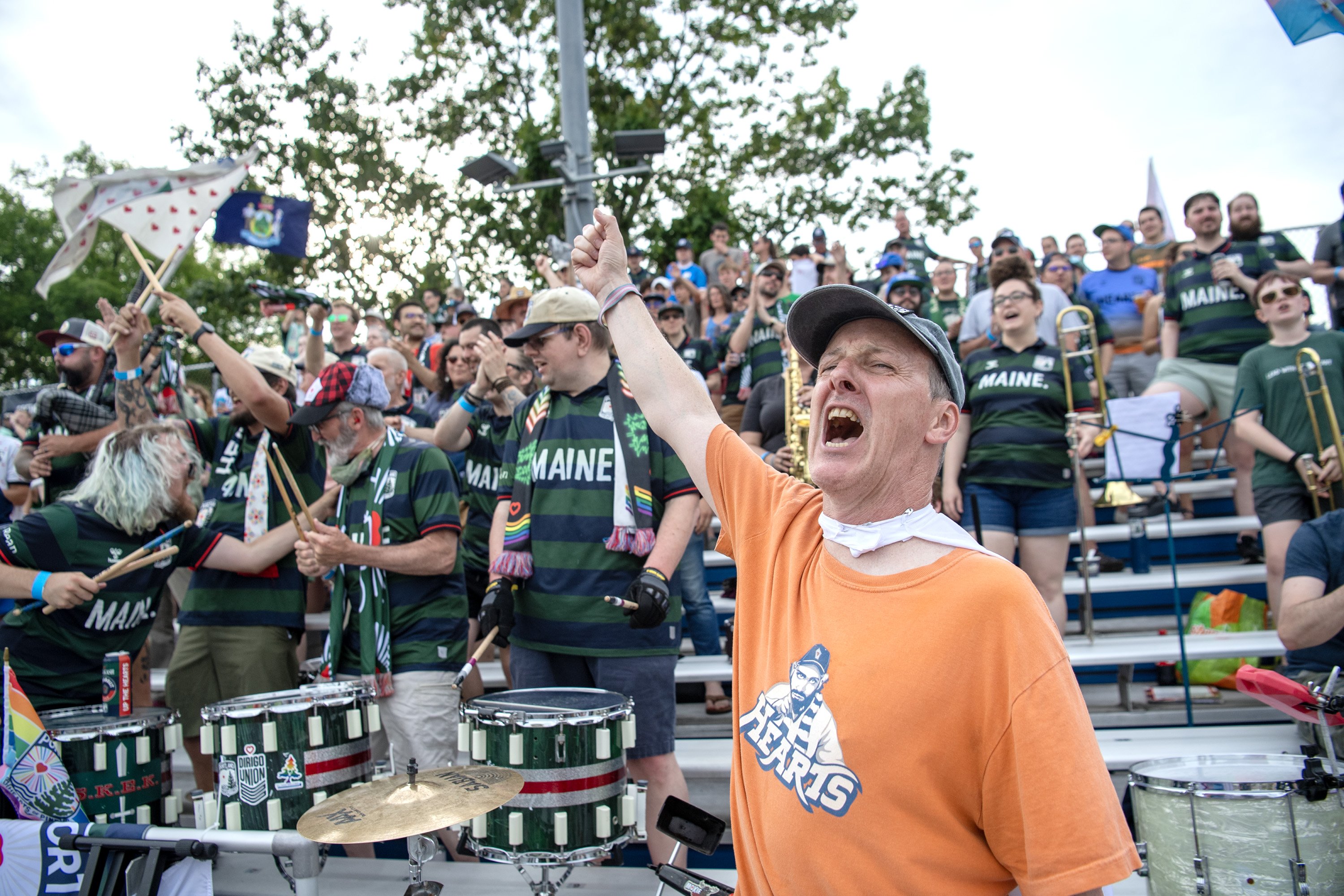
But no one anticipated what the group would become. That a couple of drums and a horn would, in just a matter of months, expand into a 30-plus-piece band featuring not just percussion and trumpets but the bagpipes, a sousaphone and a piccolo.
That in addition to creating a gameday experience that has drawn rave reviews from media outlets and fan groups across the country and beyond, Dirigo Union members would form bonds stretching outside the world of sports.
“We start from soccer, and we go from there,” said membership committee head Justine Satterthwaite, who said the Union’s group chat has developed subchannels for everything from book discussions to parenting advice.
As the players line up for kickoff on Saturday, Capo Dana Ricker helps lead a chorus of 5,000 voices in the club’s “Heart Beat” cheer: two loud drum beats followed by an overhead clap and a shout.
“Hearts!”
Over and over, the word fills the air, and the game is on.
MAINE MADE
Even well into the first half, the line at the merch tent stretches back 30, 40 people. Most of the waiting fans are already wearing Hearts scarves, sweatshirts or hats. But there’s always more to buy — blankets, Moxie the Moose figurines, today’s “Fitzy Fair” collection and any of the team’s half-dozen eye-catching jerseys.
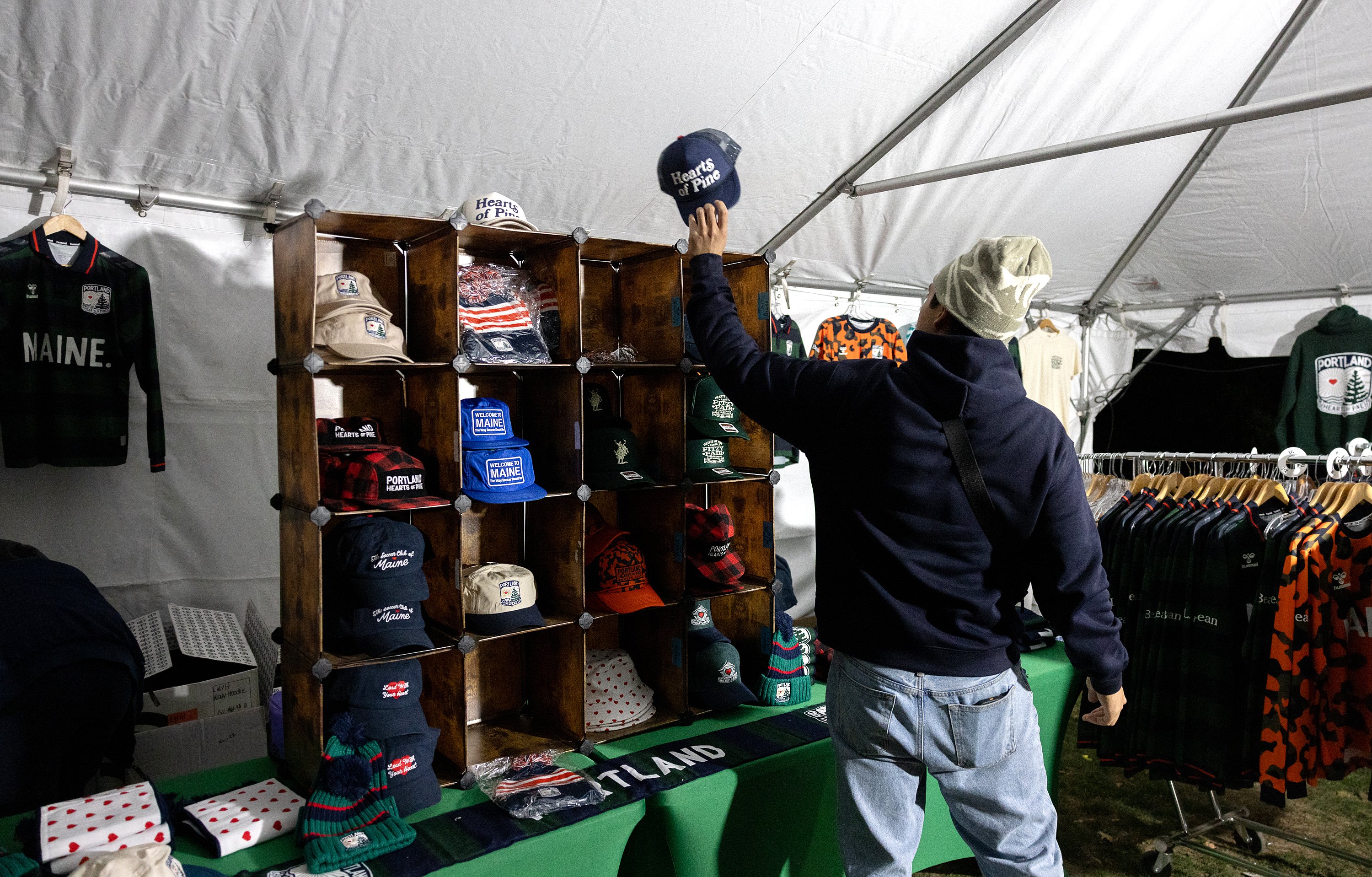
Those who didn’t manage to score tickets before they all sold out months ago — and who are not inclined to pay five times face value on the resale market — likely know the team primarily through its slick social media marketing.
Beyond clips from the games themselves, the club’s Instagram account features a steady stream of content centered on Maine’s outdoor culture. Fans sit on mountain tops, canoe down rivers, pick apples, leap into lakes. All are decked out in Hearts gear.
The organization’s leaders say they knew early on that they needed to align their brand with the state’s identity. And they know their audience well. On matchdays, Hoffman-Johnson describes the vibe around Fitzpatrick as “pro-soccer match meets street festival meets farmers market.”
It could also fairly be called a hipster paradise. Offerings from a fleet of local food trucks include wagyu smashburgers, red snappers and oysters on the half shell. The craft beer, wine and cider list includes three different Hearts-themed drinks from Maine breweries. Compost bins dot the stadium.
“At every turn it was like, well, what is the most Maine thing you could possibly do?” said Lane, the marketing head.
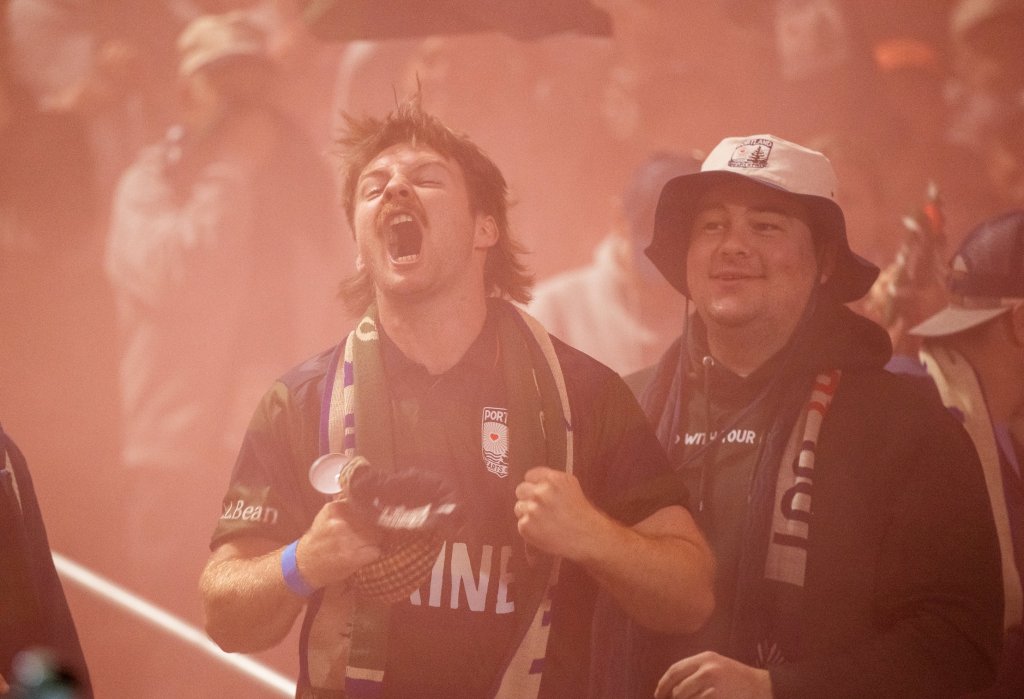
All of this inevitably raises the question of authenticity. Cynics might see the team’s new “blaze orange” camouflage kits not as a genuine tribute to Maine’s hunters but as the type of lumberjack cosplay that recent Boston transplants can’t get enough of.
The club’s brain trust is certainly savvy enough to recognize what they stand to gain from visibly embracing both that type of iconography and community values like “buy local” and “help your neighbor.” They say things like “soccer fans index pretty highly for caring about what their club does off the field.”
But Hoffman-Johnson and his team have been consistent in their story since the club’s conception: bringing together a community of proud Mainers is not just the recipe for the organization’s success, they say, but the point of the team’s very existence.
“This club is, at the end of the day, as focused on doing good and spreading hope as anything else,” Hoffman-Johnson said.
The fanbase has bought in. They say they don’t just see a collection of players with “Maine.” emblazoned across their chests; they see a team that represents the state’s ethos on the field — gritty, hard-working — and off, where it regularly participates in community outreach programming, including a partnership with the East End Community School.
They see players who are in Portland not because a Boston team has stashed them in the minor leagues, but because they want to bring a championship to Maine.
Wright’s penalty in the 47th minute brings the club a step closer to that goal. But there’s a lot more soccer to play.
SOCCER AT ITS FINEST
Just a couple of weeks ago, the Hearts were flying. From early July through the end of September, the team surged toward the top of the table while losing just once in 14 games. A spot in the top eight and the league playoffs seemed inevitable. Supporters began eyeing a top-four finish, which would guarantee a home playoff game at Fitzpatrick.
But with several starters injured or worn down from the long season, the squad has struggled since October. After three straight losses, they have still not punched their ticket to the post-season coming into Saturday’s game.
Fans are confident that they’ll get the job done against last-place Westchester. They admit, though, that a loss could put the Hearts in a very uncomfortable spot heading into the last week of the season.
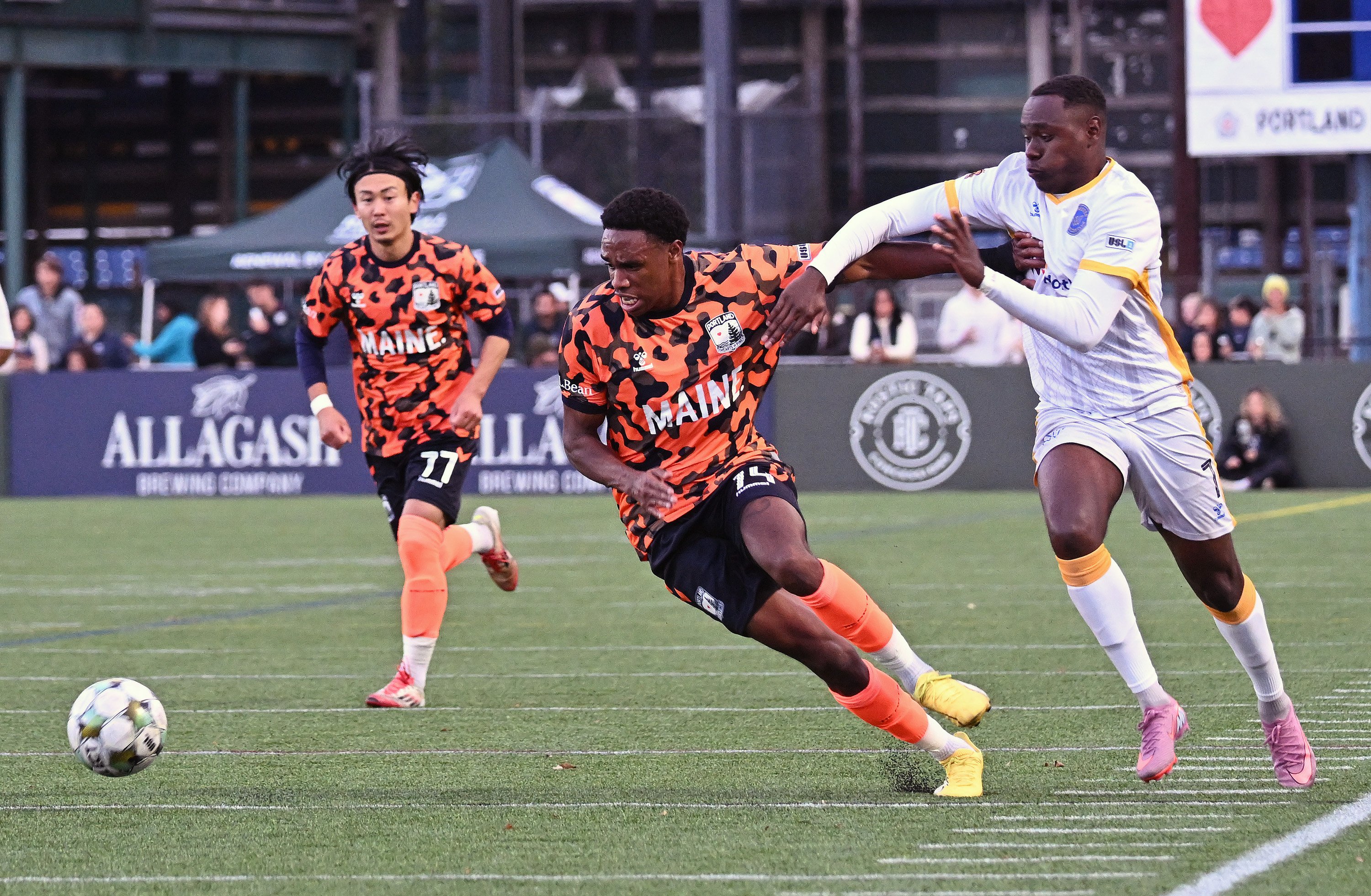
There are no world championships to be won in USL League 1, the third tier of American professional soccer. Though some members of the Hearts who hail from smaller countries represent their nations on the international stage, few of them will ever reach the heights of Major League Soccer, let alone the top European leagues.
That doesn’t seem to matter to the fanbase. In the corner of the stadium farthest from the supporters section, packs of kids roll around on the grassy hillside while their parents lounge on nearby picnic blankets.
Though it’s quieter here, away from the booming drums, many fans remain locked into the game. Groans fill the air when left back Nathan Messer puts a shot over the bar in the 65th minute. A few minutes later, the crowd finally goes silent, if only for a moment, when Westchester star J.C. Obregón deflects a cross past Hearts keeper Hunter Morse to level the score.
Then the drums begin to beat again, the Dirigo Union doing what it can to help pick its team off the mat.
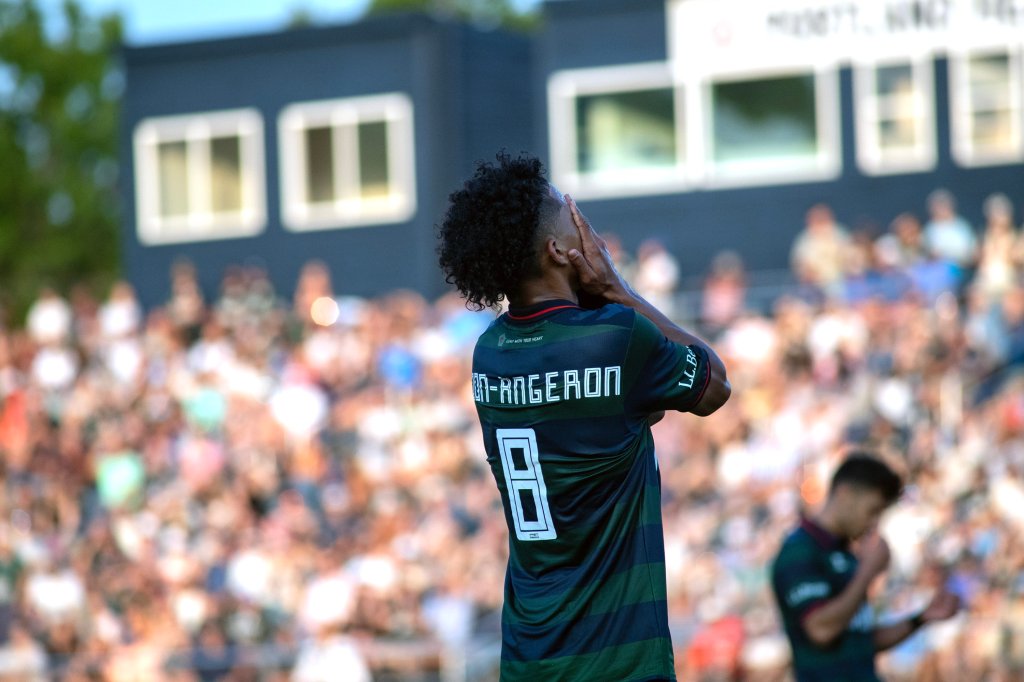
In the context of American professional sports, it seems unusual for a lower division team like the Hearts to engender such passion. Thousands of fans love going to Sea Dogs games, but at the end of the day, few really care whether the home team wins.
A better comparison point, said Burke Cherrie, who helped build the Hearts of Pine brand before leaving the organization earlier this year, might be college sports. The fact that Penn State football wouldn’t be able to compete with the Kansas City Chiefs doesn’t discourage the 100,000 fans that flock to University Park every gameday. The real draw is the sense of tradition, of heritage.
“That’s what soccer is at its finest around the globe,” Cherrie said.
Winning is not what matters most, those around the club say, but it does matter. Teams are more fun to support when they’re good. And teams that have enthusiastic supporters are more attractive to players, who can make as little as $2,200 per month at the USL 1 level. Some clubs in the league still draw fewer than 1,000 fans each game.
“It makes us all the more grateful to be here, because we know what else is out there. Being in professional soccer is great, but to be somewhere where you’re relevant — that matters,” Hearts head coach Bobby Murphy said. “It’s not lost on us how lucky we are.”
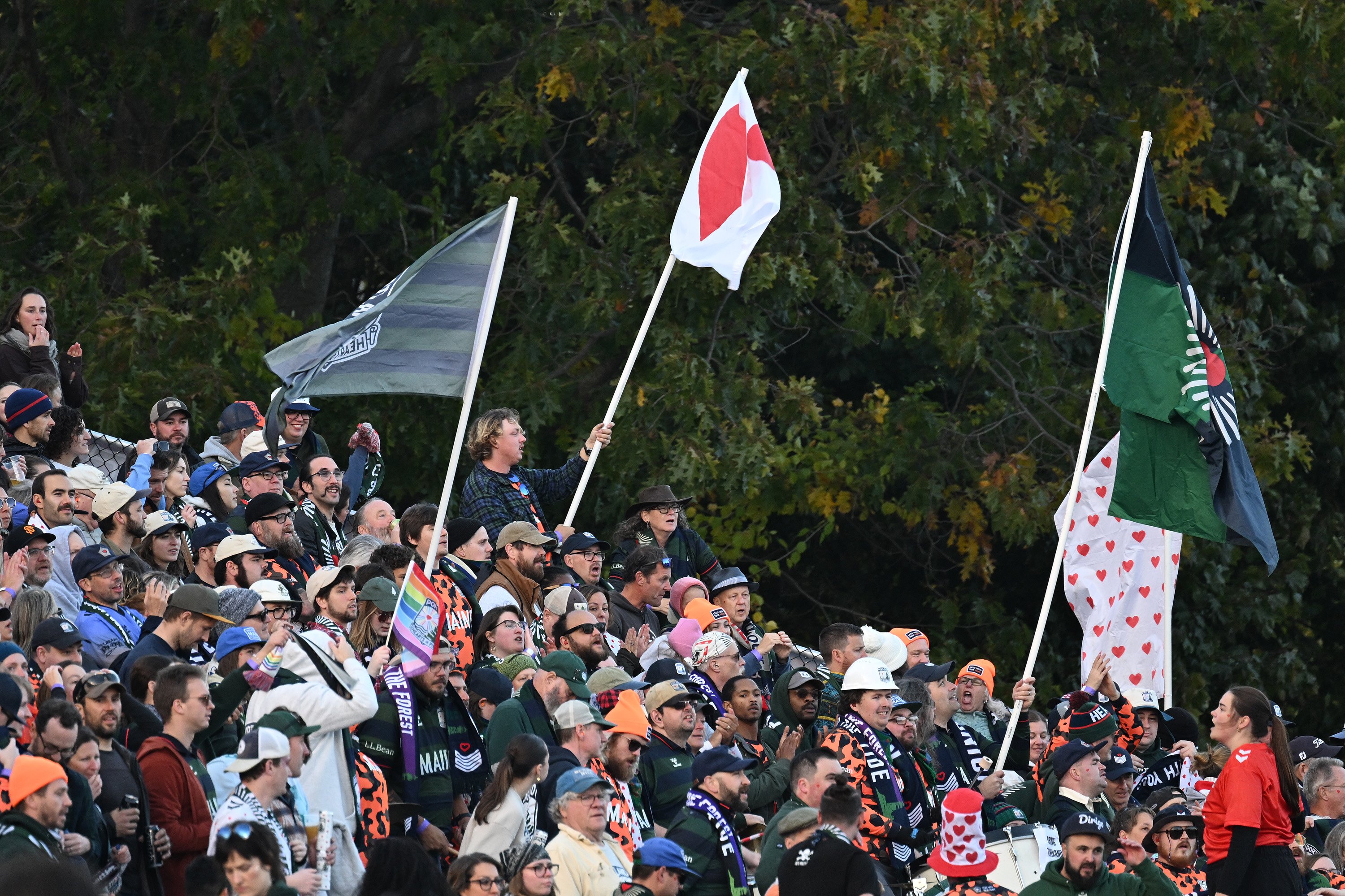
The Hearts are a little less than lucky on Saturday. They regain the lead in the 75th minute, only to concede again on a free kick at the beginning of stoppage time. Several players drop their heads at the final whistle, exhausted and frustrated. The draw secures them a spot in the playoffs, but the team still hasn’t rediscovered its form.
Still, it’s mostly smiles as the Hearts take their customary lap around the field to salute the fans. Many players take their time walking the fenceline, signing scarves, sneakers and, when nothing else is available, bare skin. While they pack up their banners and drums and gather their empty beer cans, members of the Dirigo Union call out to players to thank them for their effort.
It’s unclear exactly what the future holds for the club. Some fans hope that when the USL implements its promised promotion system in the coming years, the Hearts could ascend to a higher rung of American soccer, proving that Maine is capable of punching above its weight.
Club leaders say they need to explore ways to fit more people into the stadium so that the community they’ve built can continue to grow. In the meantime, they’re discussing other ways to get people involved: soccer camps, a women’s team, a youth academy.
But on Saturday night, as Union members wandered out of the stadium toward a post-game celebration at the Portland Zoo, their hearts were set on the more immediate dream: a championship team to call their own.
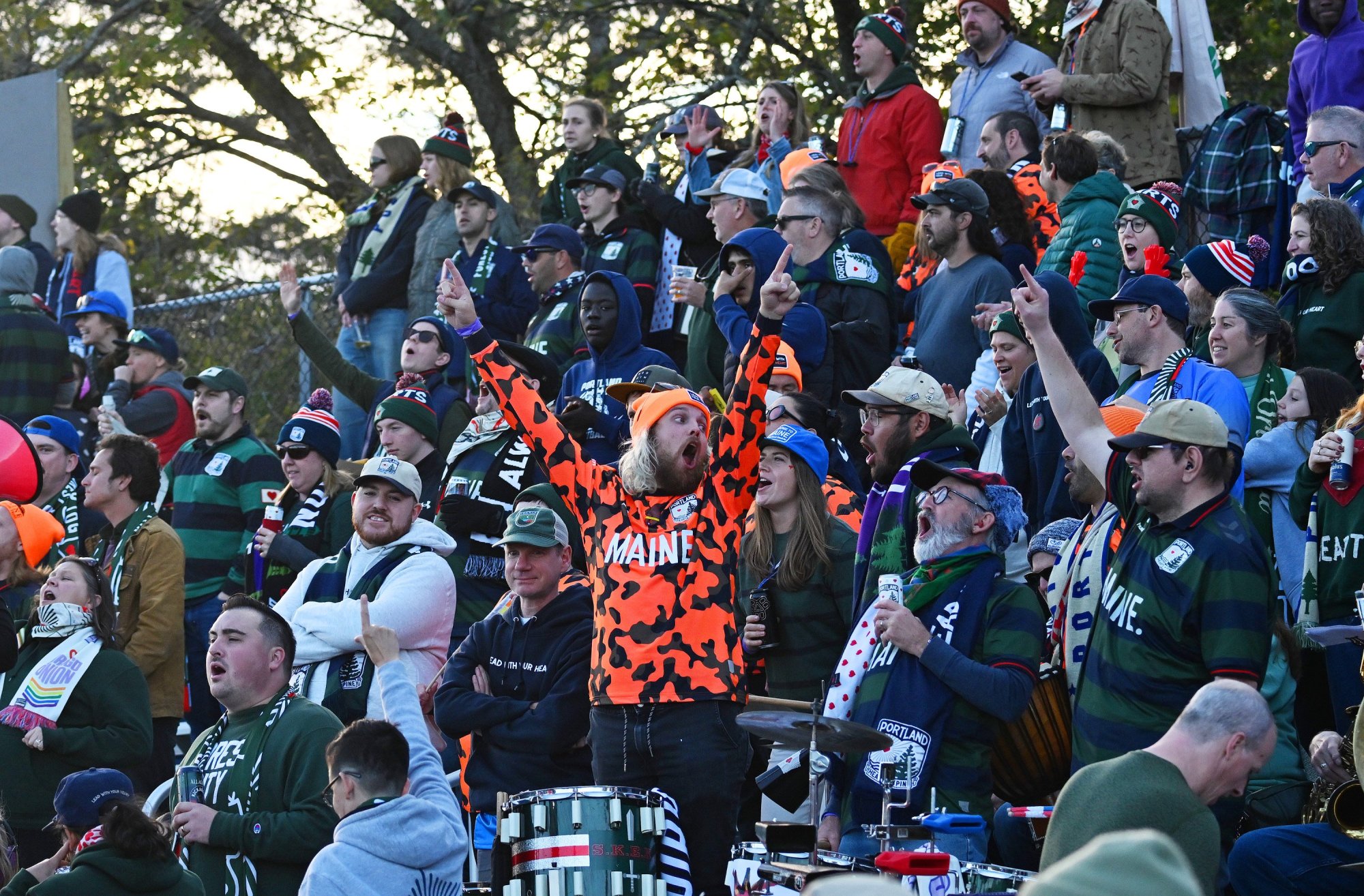

We invite you to add your comments. We encourage a thoughtful exchange of ideas and information on this website. By joining the conversation, you are agreeing to our commenting policy and terms of use. More information is found on our FAQs. You can modify your screen name here.
Comments are managed by our staff during regular business hours Monday through Friday as well as limited hours on Saturday and Sunday. Comments held for moderation outside of those hours may take longer to approve.
Join the Conversation
Please sign into your CentralMaine.com account to participate in conversations below. If you do not have an account, you can register or subscribe. Questions? Please see our FAQs.